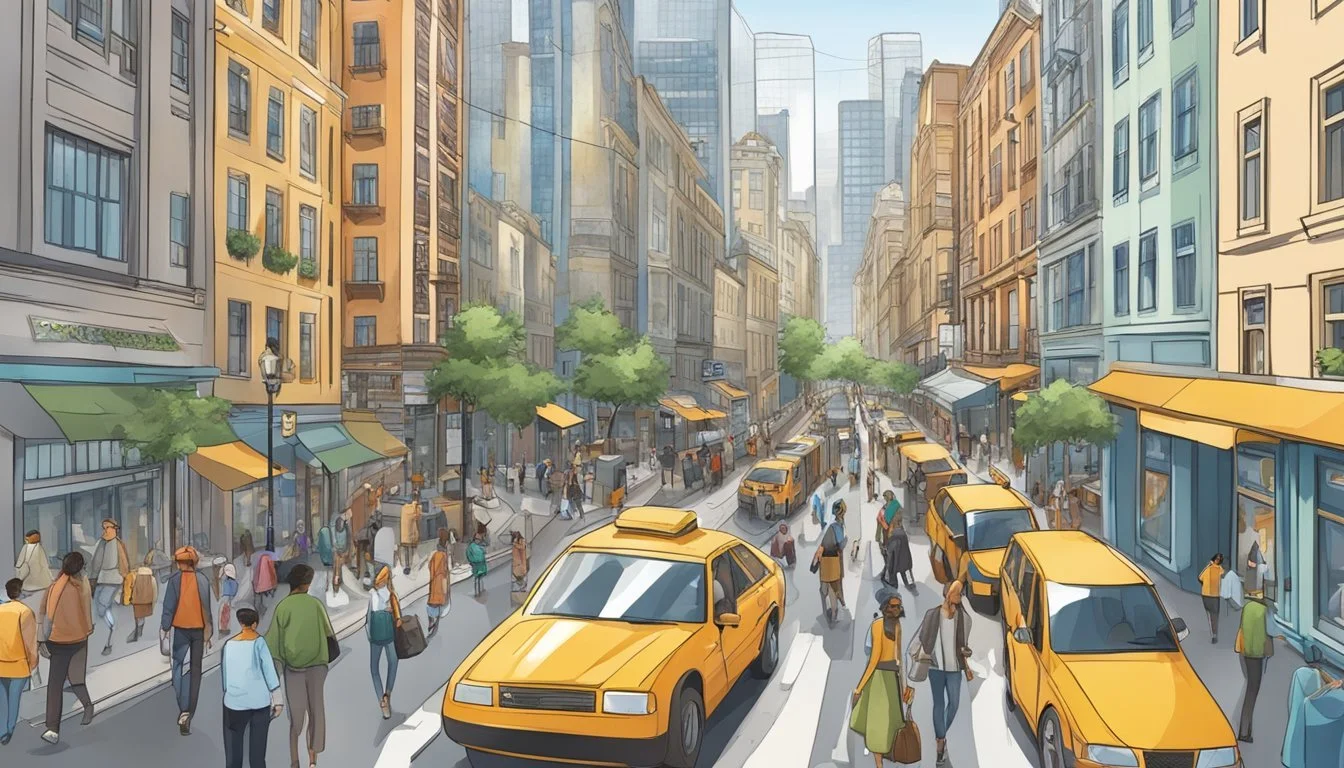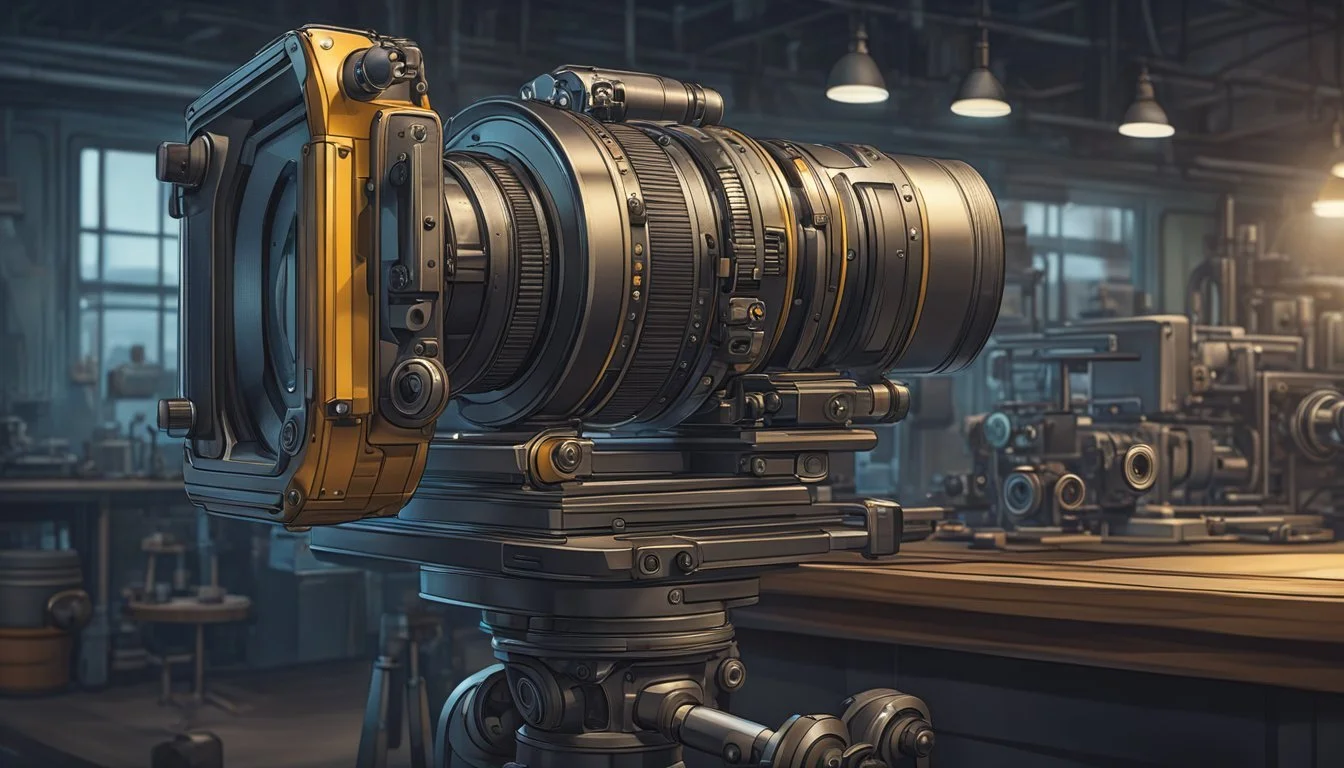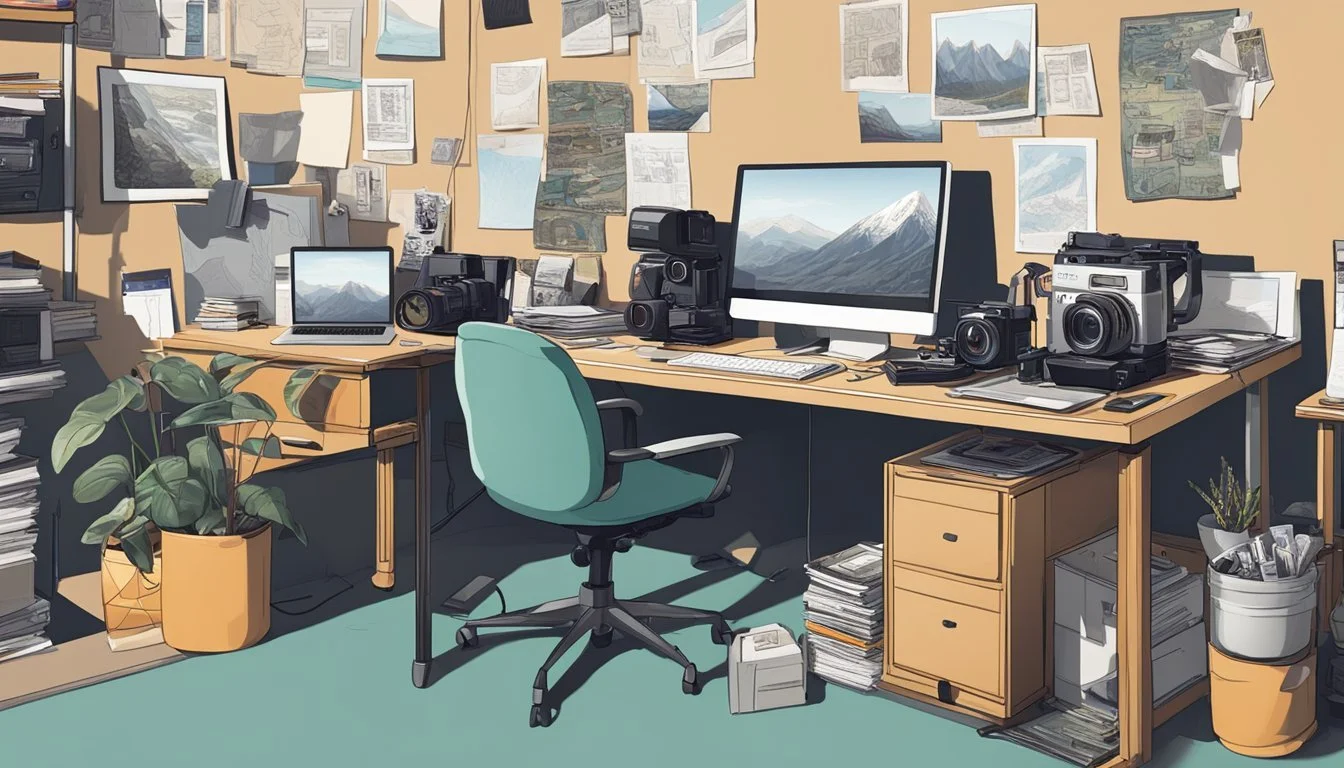Lens of Truth: How Documentary Photography Exposes Hidden Realities
Documentary photography captures real-life events, people, and environments with an objective eye. It serves as a visual record of history, social issues, and everyday life. This powerful medium has the ability to inform, educate, and inspire viewers through its raw and unfiltered portrayal of reality.
Documentary photographers aim to tell truthful stories through their images, shedding light on important subjects and often advocating for social change. Pioneers like Jacob Riis, Lewis Hine, and Dorothea Lange used their cameras to document social injustices and spark reforms. Today, documentary photography continues to play a crucial role in raising awareness about global issues and preserving cultural heritage.
While similar to photojournalism and street photography, documentary photography often involves long-term projects and a deeper exploration of subjects. Photographers in this field approach their work with empathy and respect, striving to create honest and impactful visual narratives that resonate with viewers and stand the test of time.
History of Documentary Photography
Documentary photography emerged alongside the invention of the camera, capturing real-life moments and social issues. It evolved from early influences to become a powerful medium for visual storytelling and social change.
Early Influences
Photography's documentary potential was recognized soon after its invention in 1839. Early pioneers like Mathew Brady documented the American Civil War, providing a stark visual record of the conflict. Jacob Riis used photography to expose poor living conditions in New York City tenements in the 1890s. His work "How the Other Half Lives" sparked social reforms.
Lewis Hine's photographs of child labor in the early 1900s contributed to the passage of child labor laws. These early documentarians established photography as a tool for social advocacy and historical record-keeping.
Developments in the 20th Century
The 1930s saw a surge in documentary photography during the Great Depression. The Farm Security Administration hired photographers like Dorothea Lange to document rural poverty. Lange's "Migrant Mother" became an iconic image of the era.
Henri Cartier-Bresson pioneered the concept of the "decisive moment" in the 1950s, capturing fleeting instants of significance. His work influenced generations of street photographers.
The FSA project created an extensive visual archive of American life during a crucial historical period. It showcased photography's power to inform and influence public opinion.
Modern Evolution
Post-World War II, documentary photography continued to evolve. Robert Frank's "The Americans" (1958) offered a raw, subjective view of American society, challenging traditional documentary aesthetics.
Digital technology revolutionized the field in the late 20th century. It democratized image-making and distribution, allowing more voices to contribute to visual storytelling.
Today, documentary photography intersects with fine art, photojournalism, and activism. Photographers tackle global issues like climate change and human rights, while social media platforms provide new avenues for sharing their work.
Defining Documentary Photography
Documentary photography captures real-life events and situations to create visual records of historical, social, and cultural significance. It aims to present authentic, unaltered images that tell stories and shed light on important issues.
Documentary Style
Documentary style emphasizes authenticity and objectivity. Photographers adopt an observational approach, avoiding staged scenes or manipulations. They often use natural lighting and candid shots to preserve the reality of the moment. This style requires patience and keen observation to capture genuine human experiences and environments.
Techniques like wide-angle lenses and deep focus help provide context, showing subjects in their natural settings. Black and white photography is common, though not exclusive, as it can heighten the sense of timelessness and focus attention on content rather than color.
Photo Essays
Photo essays are a powerful form of documentary photography. They consist of a series of images that work together to explore a theme, tell a story, or examine an issue in depth. Each photograph in the essay contributes to the overall narrative.
Photo essays often include captions or accompanying text to provide context. They may follow a chronological sequence or be arranged thematically. Photographers carefully select and order images to create a cohesive and impactful visual journey for the viewer.
Documentary Versus Photojournalism
While closely related, documentary photography and photojournalism have distinct characteristics. Documentary projects typically unfold over longer periods, allowing for in-depth exploration of subjects. Photojournalism often focuses on breaking news and current events, requiring quick turnaround times.
Documentary photographers may have more creative freedom in their approach and presentation. Photojournalists usually adhere to stricter ethical guidelines and journalistic standards. Both aim for truthful representation, but documentary work may incorporate more personal interpretation or artistic elements.
Photographers and Impact
Documentary photographers have shaped our understanding of the world through their powerful images. Their work has exposed social issues, preserved historical moments, and influenced public opinion on a global scale.
Pioneers of the Craft
Dorothea Lange captured the essence of the Great Depression with her iconic "Migrant Mother" photograph. This image became a symbol of the era's hardships and helped garner support for government assistance programs.
Henri Cartier-Bresson, known for his "decisive moment" philosophy, revolutionized street photography. His candid shots of everyday life in various cultures provided intimate glimpses into different societies.
Robert Capa's war photography brought the realities of conflict to the public eye. His images from the Spanish Civil War and World War II changed how people perceived armed conflicts.
Contemporary Documentary Photographers
Steve McCurry's vibrant portraits, including the famous "Afghan Girl," have brought global attention to various cultures and humanitarian issues. His work has appeared in numerous National Geographic covers.
Nan Goldin's intimate photographs of the LGBTQ+ community in New York City during the 1970s and 1980s offered a raw, unfiltered look into a subculture often marginalized by mainstream society.
Don McCullin's stark black-and-white images of war zones and impoverished areas have exposed the brutal realities of conflict and social inequality. His work has raised awareness about global issues.
Societal Impact Through Lenses
Documentary photographers have played a crucial role in shaping public opinion and driving social change. Gordon Parks' photographs of racial segregation in the United States contributed to the civil rights movement.
Their work has influenced policy decisions, raised funds for humanitarian causes, and brought attention to overlooked issues. Images of famine, natural disasters, and human rights abuses have spurred international aid efforts.
Documentary photography continues to evolve with digital technology and social media. Modern photographers use these platforms to reach wider audiences and create immediate impact, ensuring that important stories are seen and heard around the world.
Social Issues and Photography
Documentary photography serves as a powerful medium for exposing social issues and inspiring change. It captures real-life struggles, inequality, and injustice through a visual narrative that resonates with viewers.
Humanizing Struggles
Documentary photographers bring human faces to abstract social problems. Their images create empathy and understanding by showing the real people affected by societal challenges.
Dorothea Lange's iconic "Migrant Mother" photograph humanized the Great Depression's impact on families. The image of Florence Owens Thompson and her children became a symbol of resilience during hardship.
Photographers like Gordon Parks used their cameras to document the civil rights movement, revealing the humanity of those fighting for equality.
Championing Social Change
Photography plays a crucial role in advocating for social change by raising awareness and motivating action.
Images of social injustice can spark public outrage and pressure authorities to address problems. Photographs of child labor by Lewis Hine contributed to the passage of child labor laws in the early 20th century.
Contemporary photographers continue this tradition by documenting issues like climate change, refugee crises, and economic disparities. Their work appears in news outlets, galleries, and social media, reaching wide audiences.
Documenting Injustice and Inequality
Documentary photographers expose systemic inequalities and social injustices that might otherwise remain hidden from public view.
Allan Sekula's work critiqued global capitalism and labor conditions. His long-term projects examined the impact of economic systems on workers and communities.
Photographers document issues like homelessness, poverty, and discrimination. Their images provide visual evidence of societal problems and challenge viewers to confront uncomfortable realities.
By shining a light on inequality, these photographers contribute to public discourse and policy debates about social justice.
Genres and Styles
Documentary photography encompasses various specialized approaches that capture different aspects of reality. These genres each focus on specific subjects and settings, employing unique techniques to tell visual stories.
Street Photography
Street photography documents everyday life in public spaces. Photographers capture candid moments, human interactions, and urban environments. This genre often uses color photography to convey the vibrancy of city scenes.
Practitioners aim to be unobtrusive, blending into crowds to catch authentic moments. They may use small cameras and wide-angle lenses for discretion and context.
Street photographers look for interesting juxtapositions, expressions, and slice-of-life vignettes. Their images can reveal social dynamics, cultural trends, and the human condition in public settings.
War Photography
War photography documents armed conflicts and their impacts. Photographers risk their lives to capture combat, destruction, and humanitarian crises in war zones.
This genre often employs black and white imagery to convey gravity and timelessness. War photographers balance showing the harsh realities of conflict with respecting human dignity.
Their work can influence public opinion and policy decisions. Notable war photographers like Robert Capa and James Nachtwey have produced iconic images that shaped perceptions of specific conflicts.
Conservation Photography
Conservation photography aims to document and protect the natural world. Photographers capture wildlife, landscapes, and environmental issues to raise awareness and inspire action.
This genre often uses dramatic imagery to showcase the beauty and fragility of ecosystems. Conservation photographers may spend extended periods in remote locations to document rare species or habitats.
Their work can support scientific research and conservation efforts. Images of endangered species or threatened landscapes can drive public engagement with environmental causes.
Technical Aspects
Documentary photography requires mastery of various technical elements to effectively capture authentic moments. These skills encompass composition, shooting techniques, and the strategic use of color to convey powerful narratives.
Composition in Documentary Photography
Strong composition is crucial for creating impactful documentary images. The rule of thirds remains a fundamental guideline, dividing the frame into a 3x3 grid to place key elements along the lines or intersections. Leading lines can guide viewers' eyes through the image, emphasizing important subjects or creating a sense of depth.
Framing techniques use natural elements to draw attention to the main subject. Negative space can isolate subjects and create emphasis. Photographers should pay attention to background details, ensuring they complement rather than distract from the main subject.
Balance is essential in documentary compositions. Symmetry can create a sense of order, while asymmetry can add visual interest and tension.
Shooting Documentary Photography
Documentary photographers must be prepared to capture fleeting moments. Fast shutter speeds freeze action, while slower speeds can convey motion. Aperture choice affects depth of field, with wider apertures isolating subjects and narrower ones maintaining sharpness throughout the frame.
ISO settings balance image quality with low-light performance. Higher ISOs allow for faster shutter speeds in dim conditions but introduce noise. RAW file format preserves maximum image data for post-processing flexibility.
Lens selection impacts perspective and storytelling. Wide-angle lenses capture broader scenes and environmental context. Telephoto lenses isolate subjects and compress perspective. Prime lenses offer superior image quality and low-light performance.
The Role of Color in Documentary Work
Color plays a vital role in documentary photography, influencing mood and narrative. Vibrant colors can evoke energy and emotion, while muted tones may convey solemnity or nostalgia. Color contrast draws attention to key elements within the frame.
White balance settings ensure accurate color representation. Custom white balance can be crucial in mixed lighting situations. Some photographers use deliberate white balance adjustments to create specific moods or emphasize atmospheric conditions.
Black and white photography remains a powerful tool in documentary work. It simplifies complex scenes, emphasizing form, texture, and tonal contrast. The absence of color can create a timeless quality and focus viewers on the essential elements of the image.
Cultural and Artistic Considerations
Documentary photography intersects with culture and art in profound ways, shaping how we perceive and engage with the world around us. This art form provides a lens through which diverse perspectives and identities are explored and understood.
Representation in Museums
Museums play a crucial role in showcasing documentary photography. Major institutions like the Museum of Modern Art in New York and the Getty Museum in Los Angeles feature extensive collections. These exhibitions highlight social issues, historical events, and cultural phenomena.
Curators carefully select images that resonate with audiences and provoke thought. The presentation of documentary photographs in museum settings elevates their status as art objects while preserving their documentary value.
Many museums now focus on featuring diverse photographers, ensuring representation of different cultural viewpoints. This shift has led to more inclusive narratives being shared through documentary photography.
Photography and the LGBTQ+ Community
Documentary photography has been instrumental in chronicling the LGBTQ+ movement and culture. Photographers like Nan Goldin and Catherine Opie have created powerful visual records of LGBTQ+ life.
Their work challenges societal norms and provides visibility to often marginalized communities. Documentary images from Pride events, protests, and everyday life have helped shape public perception and understanding of LGBTQ+ experiences.
These photographs serve as historical documents, capturing pivotal moments in the fight for equality. They also function as tools for education and advocacy, fostering empathy and promoting social change.
The American Landscape and Identity
The American landscape has been a central subject in documentary photography, shaping perceptions of national identity. Photographers like Ansel Adams and Dorothea Lange captured iconic images that define America's visual heritage.
These photographs document the country's diverse geography, from sprawling urban centers to remote rural areas. They also reflect social and economic realities, such as the Great Depression era captured by Farm Security Administration photographers.
Contemporary documentary photographers continue to explore American identity through landscape. Their work often addresses environmental concerns, urban development, and changing cultural dynamics across the nation.
Influential Works and Campaigns
Documentary photography has shaped public perception and influenced social change through powerful images and campaigns. Key projects have illuminated societal issues and captured defining moments in history.
Iconic Photojournalistic Images
Dorothea Lange's "Migrant Mother" stands as one of the most recognizable documentary photographs. Taken in 1936, it depicts a worried mother with her children during the Great Depression.
Nick Ut's "The Terror of War" shocked the world in 1972. The image shows a young Vietnamese girl running naked after a napalm attack, bringing the horrors of the Vietnam War to the forefront.
Kevin Carter's haunting 1993 photograph of a starving Sudanese child being stalked by a vulture won a Pulitzer Prize. It drew global attention to the famine in Sudan.
Case Study: The Farm Security Administration
The Farm Security Administration (FSA) photography project documented rural America during the Great Depression. From 1935 to 1944, photographers like Walker Evans and Dorothea Lange captured the struggles of farmers and workers.
Their images provided visual evidence of poverty and helped garner support for New Deal programs. The FSA collection, now housed in the Library of Congress, contains over 175,000 negatives.
This project set a standard for documentary campaigns and influenced future photojournalists. It demonstrated photography's power to drive social and political change.
National Geographic's Contributions
National Geographic has been at the forefront of documentary photography since its founding in 1888. The magazine's commitment to visual storytelling has produced numerous iconic images.
Steve McCurry's 1984 photograph "Afghan Girl" became one of the most recognized covers in the magazine's history. It highlighted the plight of Afghan refugees during the Soviet-Afghan War.
National Geographic expeditions have documented remote cultures, wildlife, and landscapes. Their photographers have brought attention to environmental issues, endangered species, and cultural preservation efforts.
The magazine's focus on high-quality imagery has set industry standards and inspired generations of photographers to explore and document the world.
Documentary Photography Today
Documentary photography continues to evolve, embracing new technologies and addressing pressing social issues. Digital platforms have expanded its reach, while photographers explore innovative approaches to storytelling.
Current Trends and Future Directions
Documentary photographers increasingly focus on long-term projects, delving deep into complex social and environmental topics. Climate change, migration, and inequality are prominent themes. Photographers like Sebastião Salgado and Lynsey Addario produce powerful visual narratives that spark dialogue and action.
Collaborative approaches are gaining traction. Photographers partner with local communities, ensuring more authentic representation. This shift challenges traditional notions of objectivity in documentary work.
Virtual reality and augmented reality technologies are opening new possibilities. Immersive experiences allow viewers to engage with stories in unprecedented ways, fostering empathy and understanding.
The Influence of Digital Media
Social media platforms have democratized documentary photography, enabling instant distribution of images to global audiences. Citizen journalists now play a crucial role in documenting events as they unfold.
Digital manipulation tools raise ethical questions about authenticity in documentary work. Photographers and publications grapple with maintaining credibility while embracing technological advances.
Online photo essays and multimedia presentations blend still images with audio, video, and interactive elements. This convergence of media forms creates rich, multifaceted narratives that captivate viewers and provide deeper context.
Mobile photography has become a legitimate tool for documentary work. Smartphones allow photographers to capture spontaneous moments and work in challenging environments with minimal equipment.



